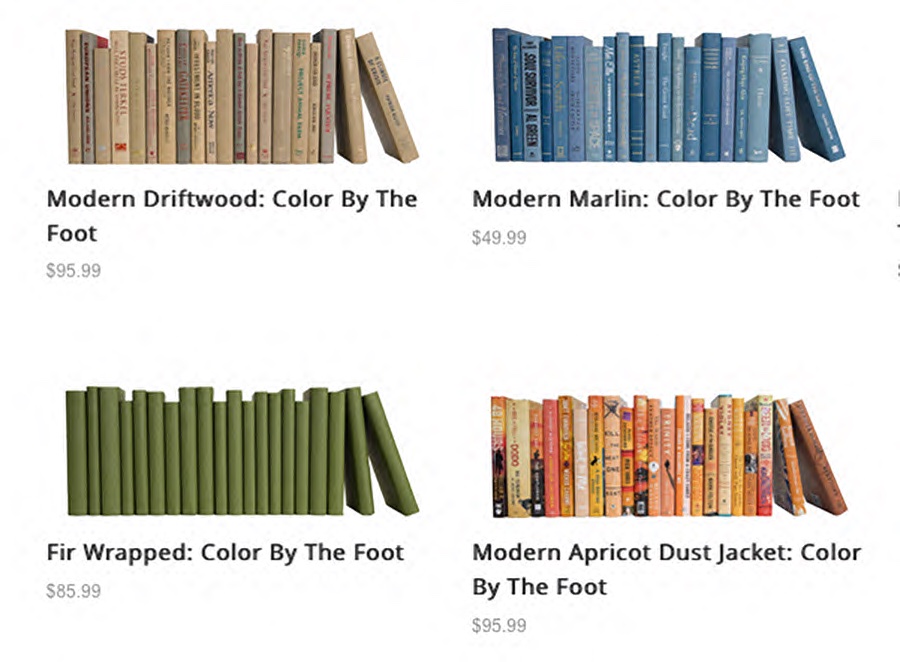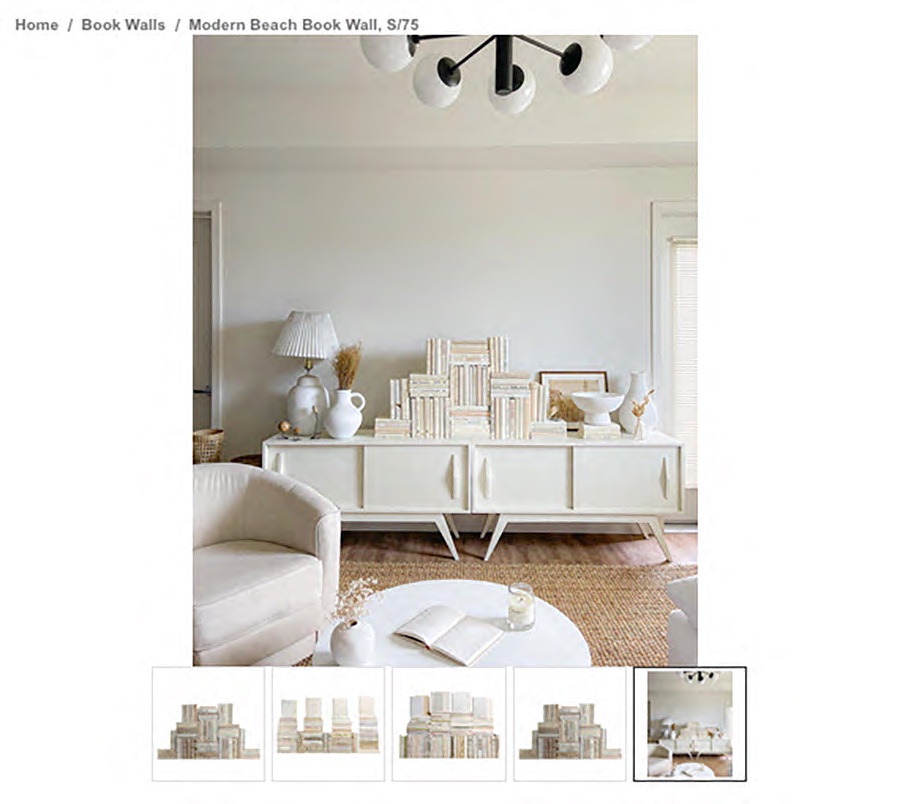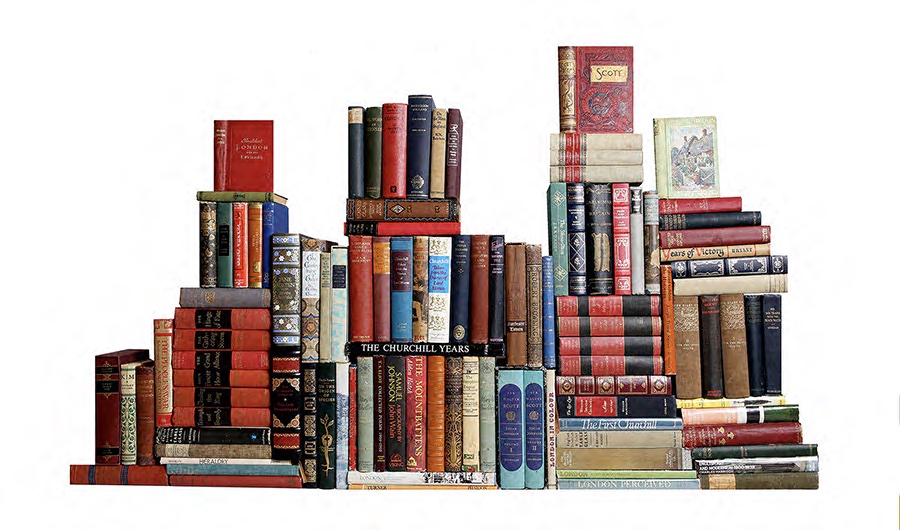I recently attended an event in the community room of a new urban apartment building. The room featured sleek contemporary furniture and was decorated in soothing, muted colors (think sage, pumpkin, sand). Various items adorned pale wood shelving and end tables: minimalist vases, useless wicker spheres, and monochrome stacks of books. In the context of this innocuous, semi-public space, the books were decidedly not a library intended for use, but rather a design decision.
As a reader, writer, and book maker, I’m interested in public and private symbology, use, and perception of physical books, so I forayed into the internet wormhole of book-based design. I found my way quickly (via home goods giant Wayfair) to Booth and Williams, whose catch phrase is “design by the book.” Online, Booth’s customers can search for “ColorStaks” and “BookWalls.” Books are grouped for sale according to the hues of their covers or wrapped individually in colored paper to suit designers’ palettes.

Selections from Booth and Williams’s Color by the Foot offerings
One description reads, “Take your design to a new level with the Modern Beach Book Wall . . . Seventy-five authentic modern hardback books in crisp shades of off-white. All books are published 1980-present and include a variety of literary works, period novels and topical texts with light overall wear. Books total approximately 7.5 linear feet. . . . Actual titles will vary from those pictured but will remain the same color pattern. Book titles could be repeated after three linear feet.”

Sample context for Booth and Williams’s Modern Beach Book Wall
In the above description, reference to content is cursory and general, couched among physical descriptors. But Booth and Williams does offer a few themed sets; customers can purchase a “Vintage Curated British Library” or “Mini Christmas in July Book Set.” But no one is expected to read these books. Rather, the themed sets emit a slightly more genred ambient aesthetic (cozy study or seasonal spirit, maybe) by virtue of their general subject matter and appearance. These options are just different shades of the iconography of the book.

Booth and Williams’s Vintage Curated British Library
So why use books for interior design? A book is an important cultural signifier that conveys a message without the need for anyone to open it and read. First, the book signifies literacy—and tangentially knowledge, education, intelligence, and even wisdom. The book also implies privilege; book owners must have the wealth to purchase them, the space to store them, and the leisure time to read them. While these assumptions may not be strictly true in 2023, they are contained in the legacy of meaning physical books carry. Perhaps also the totemic presence of books offers relief from increasingly digital lives.
Books embody many of the material qualities interior designers exploit like texture, color, and shape. Their modularity opens them to multitudes of arrangement. Composed of organic materials like cloth, paper, and leather, books can lend warmth and comfort to a space. With all these factors combined, it is not difficult to see how books occupy this niche.
I’m unsettled by these books chosen only for their covers. Their raison d'être feels tenuous. What happens when crisp shades of off-white go out of style? Yet the unread shelf of books is nothing new (War and Peace, Moby Dick). My personal bookshelves house plenty of books I haven’t gotten to yet, and I do enjoy the atmosphere they create in my space simply by existing. So what’s the difference? My unread books are hopeful; I aim one day to read them. The titles reflect my past experiences, enduring interests, and future ideals. They are recommendations from friends and mentors and have come to the sanctuary of my collection one-by-one. Read and unread, they are also the chaotic and contradictory amalgam of all their contents.
The commercialization of curated book sets for interior design raises a bevy of question that are worth asking in the age of books’ changing position and which I’ve barely touched on here. Next time you see a color-coordinated stack of random books in a waiting room or real estate open house, you might ask: Where do these books come from? Who is putting these sets together and wrapping them in paper? Who is buying them and where are they displayed? What are the historical precursors to this practice? Are we printing too many books? How do these displays stack up (pun intended) against those repurposed for art, or used for insulation, or ground into cat litter? And what else are we doing with books, aside from reading them?
Emily Tipps is Associate Librarian, Instructor, and Program Manager at the University of Utah’s Book Arts Program, and the owner/operator of High5 Press.

